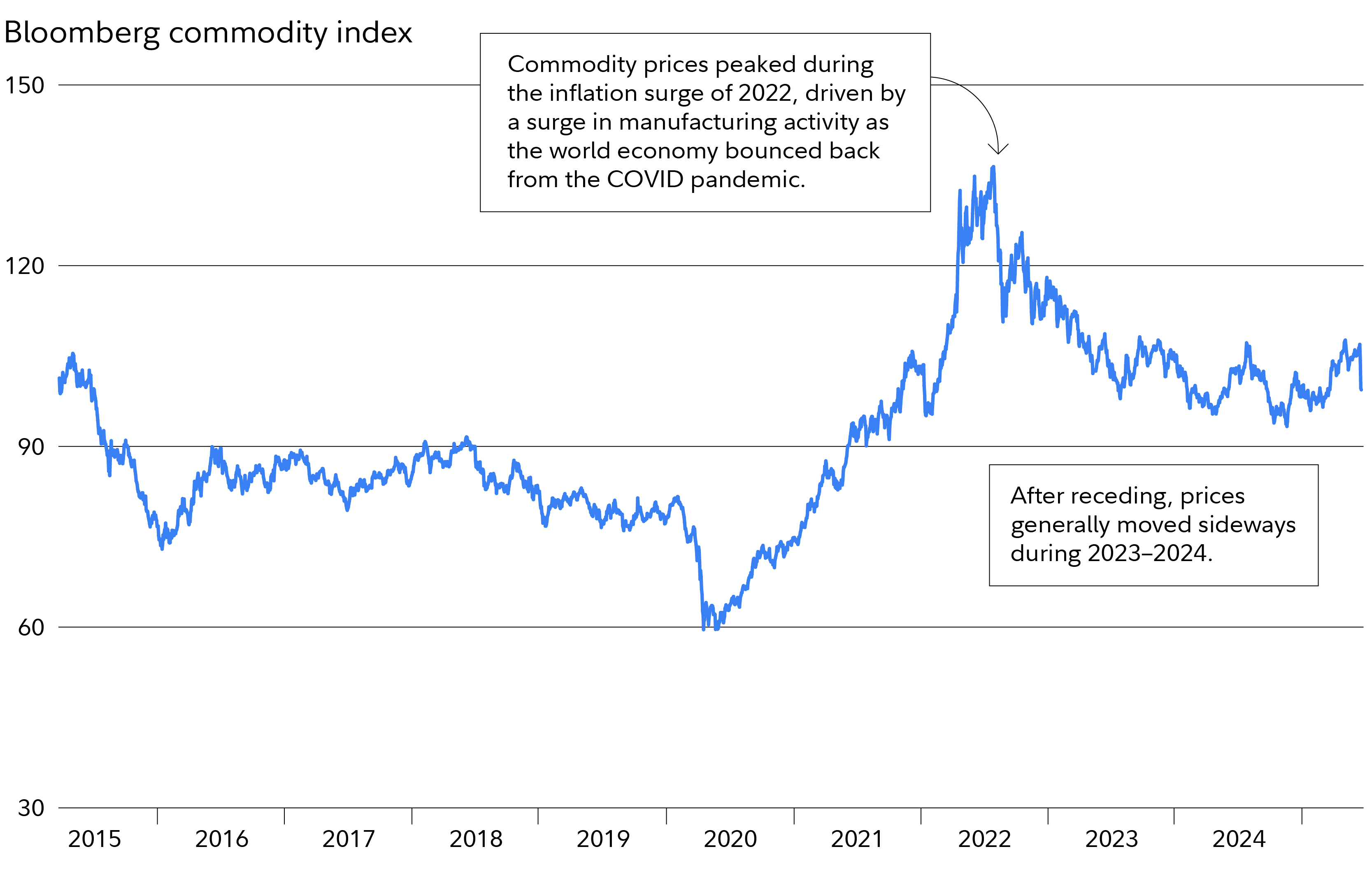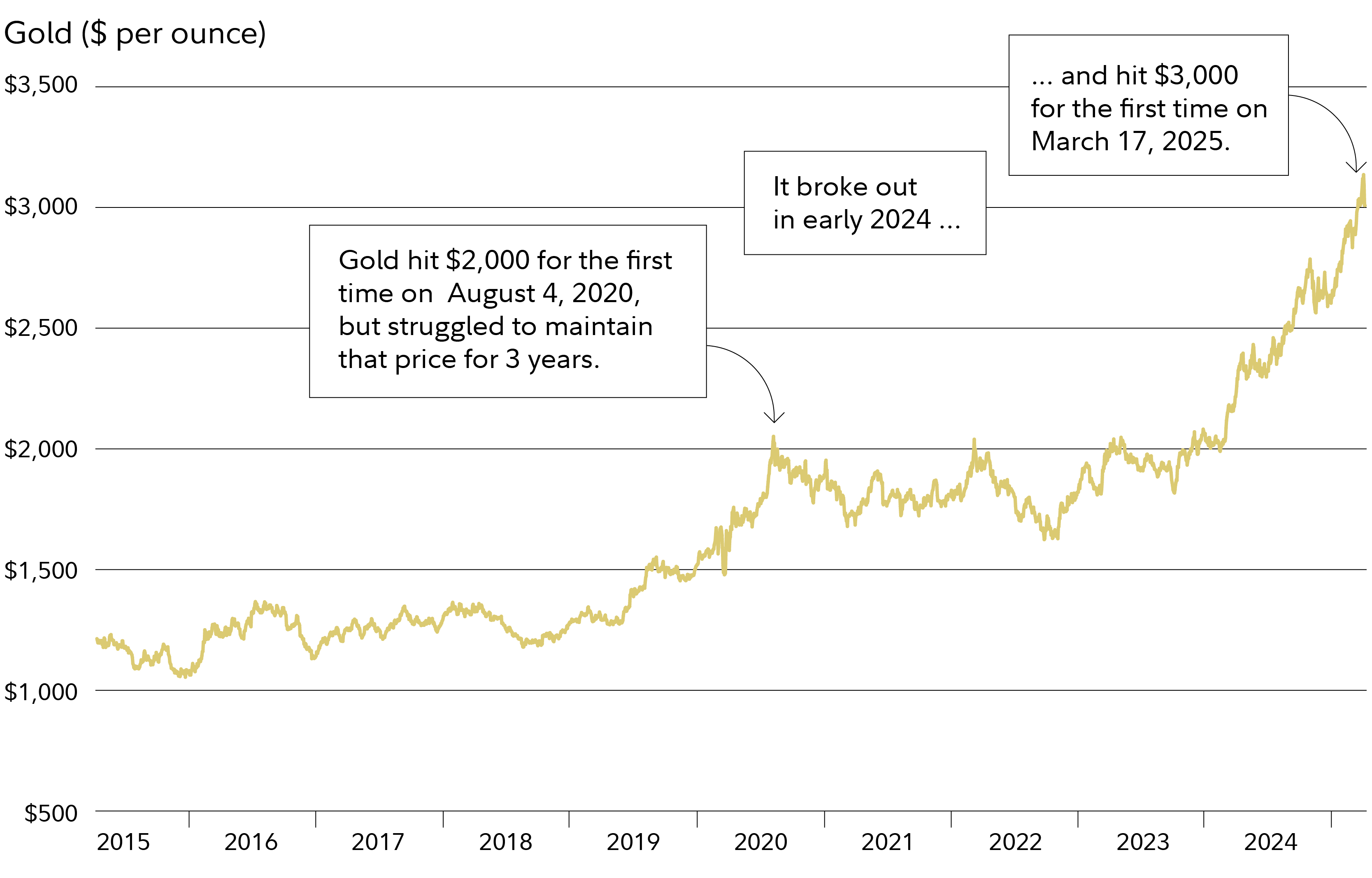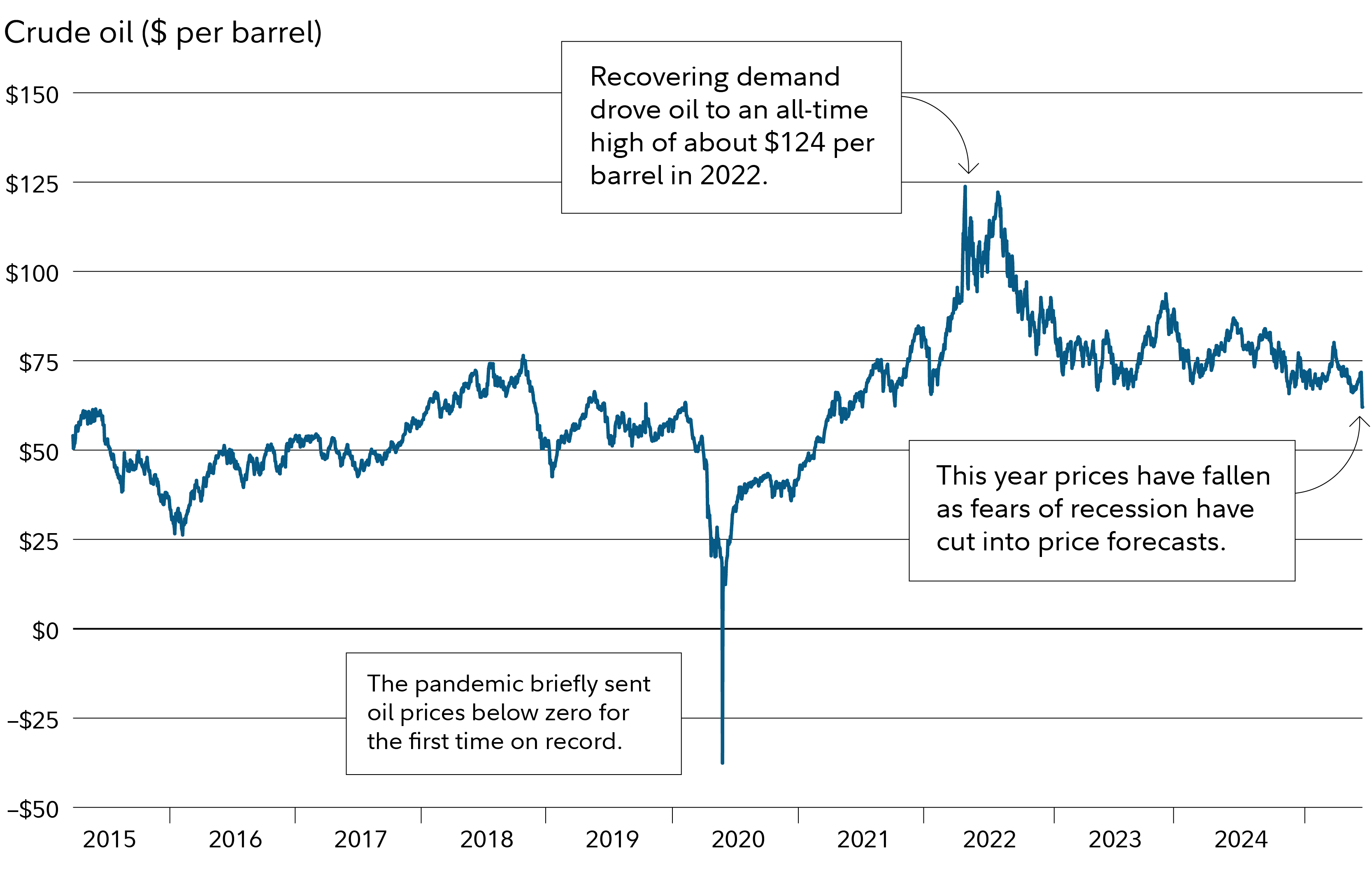Tariff tensions, rising inflation, and growth risks are creating more volatility on the commodity front. Gold has been a major beneficiary as heightened investor uncertainty has bolstered demand, driving prices to new highs. Meanwhile, rising recession risks have helped push energy prices lower, while looming tariffs on Canadian lumber imports are pushing homebuilding costs higher.

Here’s a closer look at what those recent trends could mean for markets and consumers.
Gold topped $3,000 per ounce
For multiple years, $2,000 was the mountaintop that gold prices time and time again failed to surmount. In March 2024, gold finally broke above that price, and this March, gold prices surpassed $3,000 for the first time ever.

Gold demand among investors, as well as a number of central banks, has increased recently due in large part to the precious metal’s perceived “safe-haven” features (the belief that it may hold its value better than riskier investments if markets turn lower), along with potential diversification benefits with assets like stocks and bonds. Additionally, since the dollar peaked near term in October 2022, it has broadly fallen: That has helped gold prices, which tend to rise when the dollar decreases.
Movements in gold prices can influence materials stocks, but typically have a limited impact on other segments of the market.
Will gold prices continue to push past $3,000? The World Gold Council, an international trade association for the gold industry, notes that gold prices have had an annualized growth rate of roughly 9% since 1971 (with the caveat that there have been years of both double-digit gains and losses). It’s worth noting that gold prices have already climbed 14% year to date, as of mid April.
Oil prices find a floor just under $70 per barrel
While gold prices have been rapidly climbing, oil prices have declined thus far in 2025. After briefly nearing 2024 highs earlier this year, they have since fallen as recession worries have cut into the demand forecast. West Texas Intermediate (WTI, which is charted below) and Brent Crude prices have fallen roughly 17% year to date, as trade tensions have reignited fears of a global recession. WTI is currently trading near $60 per barrel, as of mid April.

Oil prices impact not only the performance of the energy sector, but they are an important factor for the rest of the market. 2022’s bear market coincided with WTI prices hitting an all-time high near $124, and the double-digit stock market gains in 2023 and 2024 were helped by oil prices receding substantially from that peak.
Maurice FitzMaurice, manager of the Fidelity® Select Energy Portfolio (
“The key drivers of oil prices include rising global demand, slowing growth in domestic supply as shale drilling matures, production restraint on the part of OPEC, and elevated geopolitical risk due to ongoing conflict in the Middle East and Ukraine,” according to FitzMaurice.
He thinks US natural gas prices will likely be rangebound as well due to ample US supply, further delays in the development of domestic LNG export terminals, and modest growth in demand in the US.
Longer term, FitzMaurice maintains that increasing energy investments will be needed to meet rising demand for oil and gas in the coming years and decades. “Rising demand for electricity related to reshoring, electrification trends, and the build-out of new data centers should be an important trend in the power sector, with some spillover to natural gas markets over time,” FitzMaurice states.
Lumber prices rise on tariff tensions
The Administration’s new higher tariffs have played an outsized role in a variety of commodity prices of late. For example, the price of lumber—which is among the commodities that’s been the subject of tariff conflicts between the United States and Canada—has climbed in 2025.
While lumber prices are well off the all-time highs hit during COVID and 2022’s shockflation surge, they have been steadily rising for several months now. The price of softwood lumber recently hit the highest level since June 2023 and is roughly 15% higher compared to one year ago. Data from the National Association of Home Builders (NAHB) showed that lumber composite prices have climbed to $486 per 1,000 board feet.
Lumber is a key input for homebuilders and home improvement companies, in addition to other industries.
The NAHB believes that higher prices in the US may persist until a long-term deal is negotiated with Canada to boost imported lumber. NAHB also lists increasing US domestic production from publicly owned lands, a reduction in US exports to international clients, and the establishment of new markets to make up for any supply shortfall as factors that could help bring down lumber costs.
Commodities could be a key in 2025
Thus far, the heightened tariff tensions have not spared commodity prices from volatility. Typically, prices are broadly influenced by the business cycle. They generally rise when the economy is expanding and demand is relatively higher, and they generally fall when the economy is contracting and demand is relatively lower. But in 2025 and potentially beyond, investors should note that tariffs and other headline news factors will also likely be key influences.


